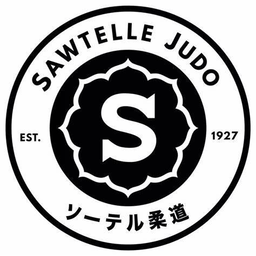(8) Daito Ryu. 大東流Kano had connections with the Takeda family who later led the school. Shiro Saigo was an adopted son of Tonomo Saigo, soke of this school before Takeda. Shiro Saigo came to Tokyo at the age of 14 to seek Jujutsu instruction and pursued Kano because of his reputation. Later, he quit both the Kodokan and Daito Ryu when his conflicting obligations to the two masters led him to an impasse.
Kano, always concerned that some important knowledge might be lost, engineered an obligation of Sokaku Takeda, Tonomo Saigo’s successor, so that Takeda had to teach and reveal the inner secrets (okuden) of the ryu to Mochizuki, an uchideshi of Kyuzo Mifune, so that these secrets could be brought back to the Kodokan. This angered Takeda who attempted to disparage the Kodokan at every opportunity. Takeda claimed he knew 3,000 techniques, probably because he always charged for instruction, and did so at a fixed price per technique. Mochizuki eventually made Judan (10th dan) in this art. Later, Kenji Tomiki was sent to Morihei Ueshiba, who was obligated to accept the student, and eventually awarded him Kudan (9th dan). Ueshiba formed his art (Aikido) from Daito Ryu and Yagyu Ryu.

Daito Ryu
(Photo courtesy of Daito Ryu Aikijujitsu Roppokai)
Video of Daito Ryu from YouTube
Video of Daito Ryu from YouTube
Daito Ryu does have many techniques, and includes sword, staff, and body arts. It is an Aiki Jujutsu, focusing on internal methods.
(9) Fusen Ryu. 不遷流 Mataemon Tanabe was persuaded to reveal the core of his syllabus to Kano after the disastrous match between the schools in 1900. The Kodokan got stomped. The Fusen people had great wrestling-style ne-waza, and the rules prohibited deadly techniques. The Fusen school might have won anyway, that is not the point. The point is that Kano realized the need for good ne-waza.

Fusen Ryu
(Photo courtesy of Bushinjuku.com)
Video of Fusen Ryu from YouTube
(10) Jikishin Ryu. 直心流My teacher said that the Kodokan was still reeling from the Fusen Ryu loss when he arrived, and later the Jikishin people were courted and eventually won over as part of the effort to “fill out” the syllabus so that the weakness that caused the Fusen loss would never be repeated.

Jikishin Ryu
(Photo courtesy of Women Warriors of Japan)
Video of Jikishin Ryu from YouTube
(11) Sekiguchi Ryu. 関口流Jushin Sekiguchi and Mogichi Tsumizu were teachers of Kano and were instrumental in the construction of the full syllabus and kata. Sekiguchi Ryu is a broad-based art but is particularly well-known for its weapons training.

Sekiguchi Ryu
(Photo courtesy of Sekiguchi Ryu Jujutsu)
Video of Sekiguchi Ryu from YouTube
(12) Kyushin Ryu. 扱心流Eguchi of Kyushin was involved in Kodokan kata and syllabus construction.

Kyushin Ryu
(Photo courtesy of Kyushin Ryu Ju Jitsu)
Video of Kyushin Ryu from YouTube
(13) Shiten Ryu. 四天流Hoshino was involved in Kodokan kata and syllabus construction.
(14) Miura Ryu. 三浦流Inazu was involved in Kodokan kata and syllabus construction.
(15) Kukishin Ryu. 九鬼神流Kukishin is particularly well-known for its techniques involving staves of various lengths. Kano was a weapons expert, so it is not surprising that Takamatsu and Kano were relatively close friends and colleagues. Takamatsu’s favorite empty-hand technique was a technique that most of us would recognize as hiza-guruma. It is from Takamatsu that Judo’s hiza-guruma comes.
Video of Kukishin Ryu from YouTube
Kukishin Ryu
(Photo courtesy of 2004 Japan Pilgrimage)
The most noteworthy master of Kyushin Ryu Jujutsu in more recent times is Shihan Yoshinori (Yazo) Eguchi of Kumamoto Prefecture, who received recognition during the formative stages of modern Judo in the early 1880s (Meiji period 1868-1912). In 1895, Governor Watanabe of Kyoto Prefecture met with the masters of the prominent schools and established the Dai Nippon Butoku Kai (Greater Japan Martial Virtue Society). This was the first official Japanese martial arts institution authorized by the Ministry of Education and endorsed by the Meiji Emperor. It was here in 1906, that Dr Jigoro Kano (嘉納 治五郎 Kanō Jigorō, 1860-1938) founder of Judo, selected techniques from the five major Jujutsu schools:
- Tenjin Shin’yō-ryū (stemming from Yoshin Ryu)
- Kito Ryu (founded by a Yagyū Shingan-ryū master)
- Takenouchi Ryu
- Daito Ryu
- Kyushin Ryu



Leave a Reply